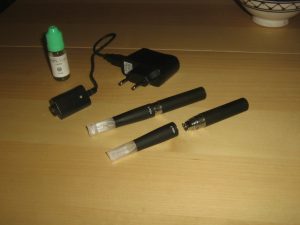New Study Claims Electronic Cigarette Vapor Doesn’t Pose Significant Risk to Human Health
 On September 26, Americans for Nonsmokers’ Rights, a not-for-profit group, slammed e-cigarette manufacturers in a press release, for marketing devices whose safety had not been scientifically proven. They demanded that the use of e-cigarettes be prohibited from workplaces and public places where tobacco smoking is banned. As if in reply to their allegations, less than a month later, findings of a new study provided the precise scientific evidence that e-cigarette vapor is certainly not harmful to human health. On October 4th, the result of the Indoor Vapor Air Quality Study (IVAQS) was published and a press release issued. The study was conducted by CHANGE, LLC, in collaboration with the National Vapers Club (NVC), at New York.
On September 26, Americans for Nonsmokers’ Rights, a not-for-profit group, slammed e-cigarette manufacturers in a press release, for marketing devices whose safety had not been scientifically proven. They demanded that the use of e-cigarettes be prohibited from workplaces and public places where tobacco smoking is banned. As if in reply to their allegations, less than a month later, findings of a new study provided the precise scientific evidence that e-cigarette vapor is certainly not harmful to human health. On October 4th, the result of the Indoor Vapor Air Quality Study (IVAQS) was published and a press release issued. The study was conducted by CHANGE, LLC, in collaboration with the National Vapers Club (NVC), at New York.
The published result of the IVAQS report states, “Comparisons of pollutant concentrations were made between e-cigarette vapor and tobacco smoke samples. Pollutants included VOCs, carbonyls, PAHs, nicotine, TSNAs, and glycols. From these results, risk analyses were conducted based on dilution into a 40 cubic-meter room and standard toxicology data. Non-cancer risk analyses revealed “No Significant Risk” of harm to human health for vapor samples from e-liquids. In contrast, for tobacco smoke most findings markedly exceeded risk limits indicating a condition of “Significant Risk” of harm to human health. With regard to cancer risk analyses no vapor sample from e-liquid exceeded the risk limit for either children or adults. The tobacco smoke sample approached the risk limits for adult exposure.” Based on these results, the IVAQS report concluded that e-cigarettes produce “very small exposures” when compared to tobacco cigarettes and that no risk to human health from their emissions is apparent.
With the release of this report, it seems that the e-cigarette industry can breathe a sigh of relief, after the relentless criticism from various quarters on the safety of their products. The fact that the IVAQS stands before us today, is all thanks to the efforts made by the NVC, which was originally the Long Island Vapers Club (LIVC), a group formed in 2009 with the intention of simply discussing electronic cigarettes. Soon, the LIVC members found themselves fighting local bans on e-cigarette use. Contributing 100s of hours of research to learn about e-cigarettes and presenting their findings at public hearings, their aim quickly became to educate legislators about these harm-reduction devices. After collecting significant funds from the vaping community and industry, LIVC collaborated with CHANGE, and thus the IVAQS was born. Data was collected in 2011 at the Center for Air Resources Engineering and Science at Clarkson University, NY, and presented to an independent toxicologist for analyses. The completed paper was published in the peer reviewed journal, Inhalation Toxicology, on 4th October, 2012.
The significance of the IVAQS is that it is the first study to cover such a wide range of toxins. Previous studies on similar lines have only covered a limited number of toxins, but have shown similar results. The study has been met with praise from several individuals and organizations. Bill Godshall of Smokefree Pennsylvania said, “For more than 25 years Smokefree Pennsylvania has been advocating indoor smoking bans. Based on the results of this study, I see no reason for e-cigarettes to be included in smoking bans.” Dr. Murray Laugesen, Public Health Medicine Specialist of Health New Zealand, agrees, “The results of this study confirm the findings of my last 4 years of research. E-cigarettes pose no discernible risk to public health.”
The president of NVC, Spike Babian happily observes, “Most vapers believe e-cigarette vapor is not harmful to those around them, but it is reassuring to finally have scientific evidence confirming those beliefs.”
















